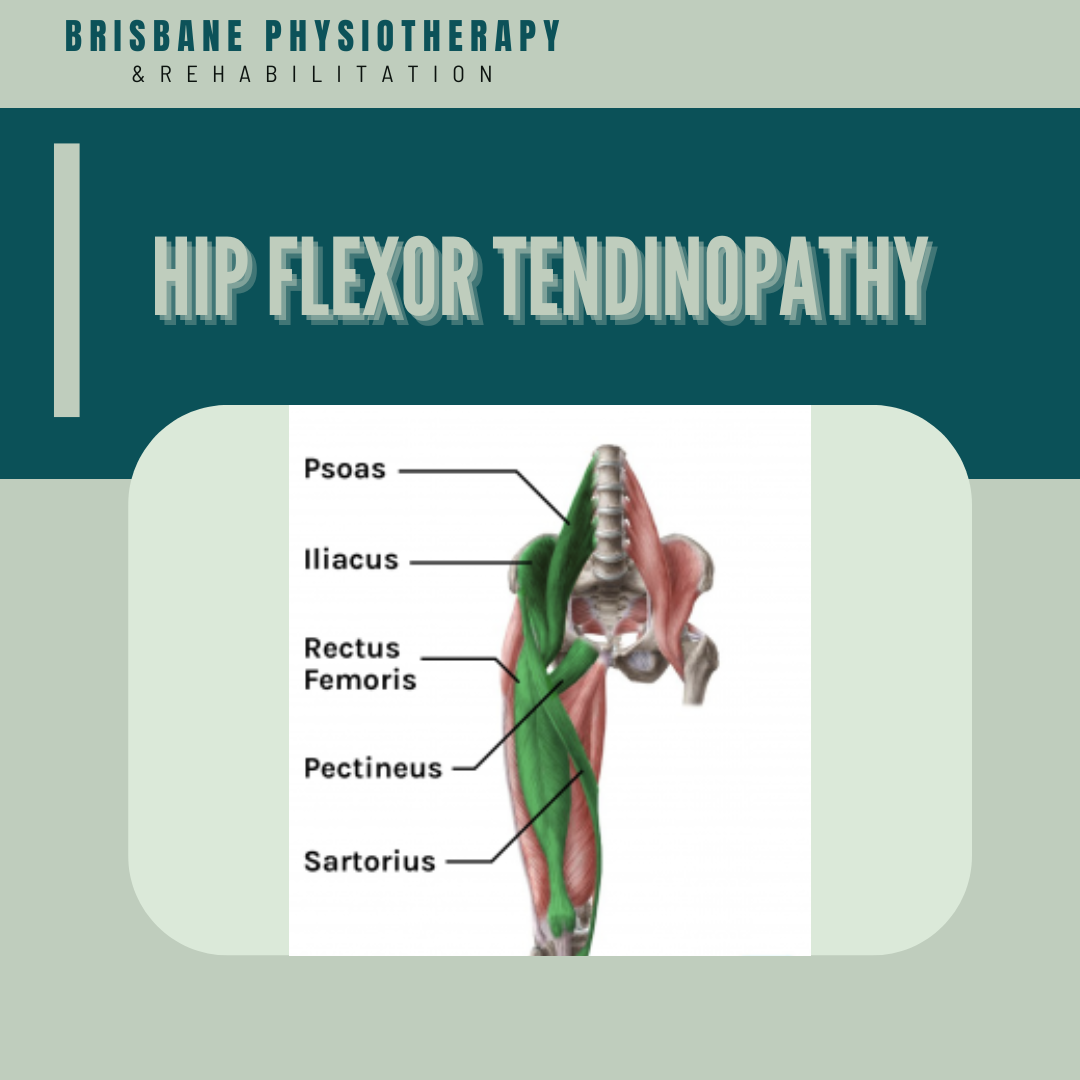Hip Flexor Tendinopathy
Hip flexor tendinopathy is a condition characterised by pain and inflammation in the tendons of the hip flexor muscles, particularly the iliopsoas and rectus femoris. This condition commonly affects athletes, individuals with sedentary lifestyles, and those who engage in repetitive hip movements. Overuse, poor biomechanics, or muscle imbalances can contribute to the development of tendinopathy, leading to discomfort and reduced mobility.
Causes and Symptoms of Hip Flexor Tendinopathy
Hip flexor tendinopathy is often caused by:
Overuse and Repetitive Strain – Activities like running, cycling, and kicking sports can overload the hip flexor tendons.
Poor Posture and Sedentary Behaviour – Prolonged sitting can cause hip flexor tightness and weakness, leading to strain when the muscles are suddenly engaged.
Muscle Imbalances – Weak glutes and core muscles can force the hip flexors to compensate, increasing their workload.
Sudden Increases in Activity Levels – Rapidly increasing exercise intensity or duration without proper conditioning can overload the tendons.
Symptoms of hip flexor tendinopathy include:
Pain or discomfort in the front of the hip or groin area
Stiffness and tightness, especially after periods of inactivity
Pain that worsens with activities such as running, stair climbing, or kicking
Tenderness when pressing on the affected tendon
Reduced strength and mobility in the hip
How Can Physiotherapy Help with Hip Flexor Tendinopathy?
Physiotherapy is highly effective in managing hip flexor tendinopathy by reducing pain, improving mobility, and addressing underlying causes. A physiotherapist can help in several ways:
1. Pain and Inflammation Management
Manual Therapy – Hands-on techniques such as massage and joint mobilisation can help reduce muscle tightness and improve circulation.
Ice and Heat Therapy – Applying ice can reduce inflammation in acute cases, while heat can improve blood flow and relaxation in chronic cases.
Electrotherapy – Techniques like ultrasound or TENS (transcutaneous electrical nerve stimulation) can help manage pain.
2. Improving Mobility and Flexibility
Stretching Exercises – Gentle stretching of the hip flexors, hamstrings, and surrounding muscles can improve flexibility and reduce strain.
Foam Rolling and Soft Tissue Release – Targeted myofascial release can help ease muscle tightness and improve mobility.
3. Strengthening Exercises
Core and Glute Activation – Strengthening the core and glutes can offload strain from the hip flexors, promoting better movement patterns.
Progressive Resistance Training – Gradually increasing resistance exercises can help rebuild tendon strength and resilience.
Eccentric Loading Exercises – Controlled lengthening of the hip flexor muscles can help improve tendon function.
4. Addressing Biomechanics and Posture
Postural Correction – Physiotherapists assess and correct poor posture to minimise strain on the hip flexors.
Gait and Movement Analysis – Identifying faulty movement patterns can help prevent further injury.
Activity Modification – Adjusting exercise routines and movement habits can aid recovery and prevent recurrence.
When to Seek Physiotherapy
If you are experiencing persistent hip pain or stiffness that affects your daily activities or exercise routine, it is advisable to consult a physiotherapist. Early intervention can prevent the condition from worsening and support a faster recovery.
Conclusion
Hip flexor tendinopathy can significantly impact mobility and quality of life, but physiotherapy offers a safe and effective approach to managing symptoms and addressing underlying causes. Through pain management, targeted exercises, and biomechanical corrections, physiotherapists play a crucial role in helping individuals recover and return to their activities with improved strength and mobility.
